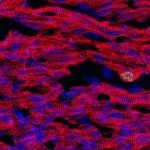Lien vers Pubmed [PMID] – 16304598
Nat Rev Genet 2005 Nov; 6(11): 826-35
Cardiogenesis is an exquisitely sensitive process. Any perturbation in the cells that contribute to the building of the heart leads to cardiac malformations, which frequently result in the death of the embryo. Previously, the myocardium was thought to be derived from a single source of cells. However, the recent identification of a second source of myocardial cells that make an important contribution to the cardiac chambers has modified the classical view of heart formation. It also has an important influence on the interpretation of mutant phenotypes in the mouse, with consequences for the classification and prognosis of human congenital heart defects.



